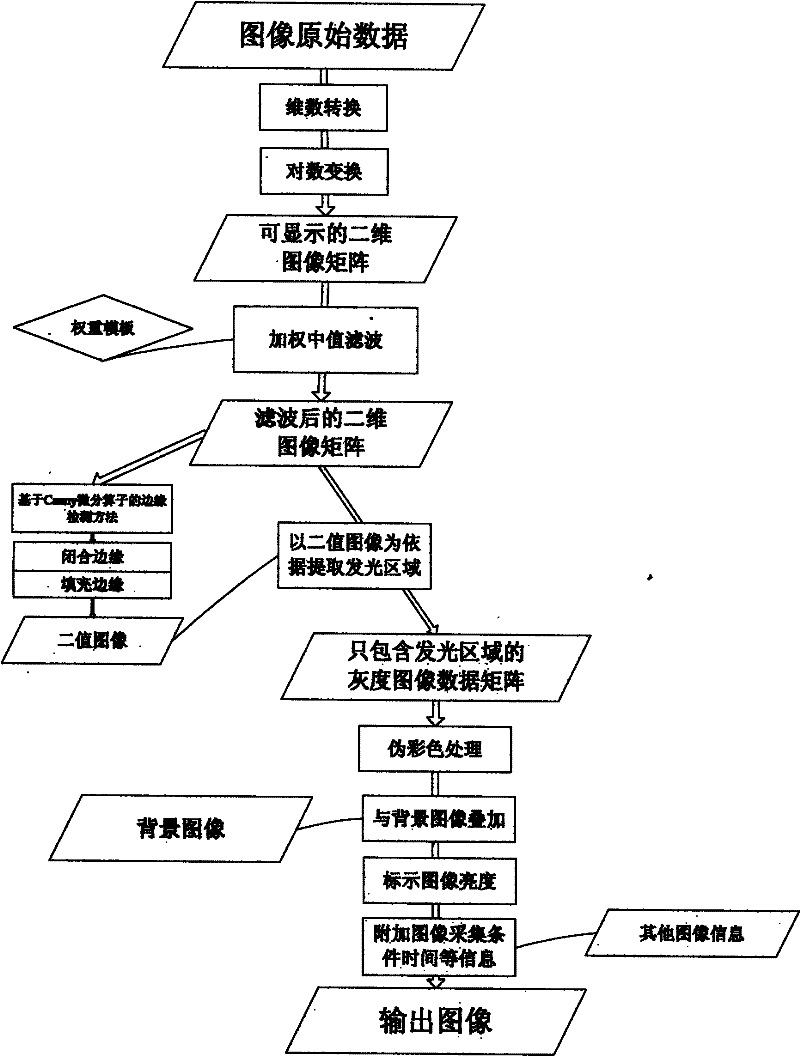Weak luminescence image processing method based on regional augmentation and regional extraction
A technology of region extraction and luminous image, applied in the field of image processing, can solve the problems of difficulty in distinguishing luminous region and noise background, and difficult to work, and achieves the effect of simple, feasible and adaptable method.
- Summary
- Abstract
- Description
- Claims
- Application Information
AI Technical Summary
Problems solved by technology
Method used
Image
Examples
Embodiment Construction
[0018] Preferred embodiments of the present invention are described in detail below in conjunction with the accompanying drawings: this embodiment is implemented under the premise of the technical solution of the present invention, and detailed implementation methods and specific operating procedures have been provided, but the protection scope of the present invention is not limited to Examples described below.
[0019] Such as figure 1 As shown, the specific steps of this embodiment are as follows:
[0020] 1. First, convert the original data sequence of the image by dimensionality conversion, and convert the one-dimensional original brightness data sequence of the background image under lighting conditions and the original weak luminescence experimental image of the tested sample into a two-dimensional array structure. In order to facilitate the display on the output device, logarithmic transformation is used in this embodiment to map the value range of the original bright...
PUM
 Login to View More
Login to View More Abstract
Description
Claims
Application Information
 Login to View More
Login to View More - R&D
- Intellectual Property
- Life Sciences
- Materials
- Tech Scout
- Unparalleled Data Quality
- Higher Quality Content
- 60% Fewer Hallucinations
Browse by: Latest US Patents, China's latest patents, Technical Efficacy Thesaurus, Application Domain, Technology Topic, Popular Technical Reports.
© 2025 PatSnap. All rights reserved.Legal|Privacy policy|Modern Slavery Act Transparency Statement|Sitemap|About US| Contact US: help@patsnap.com



